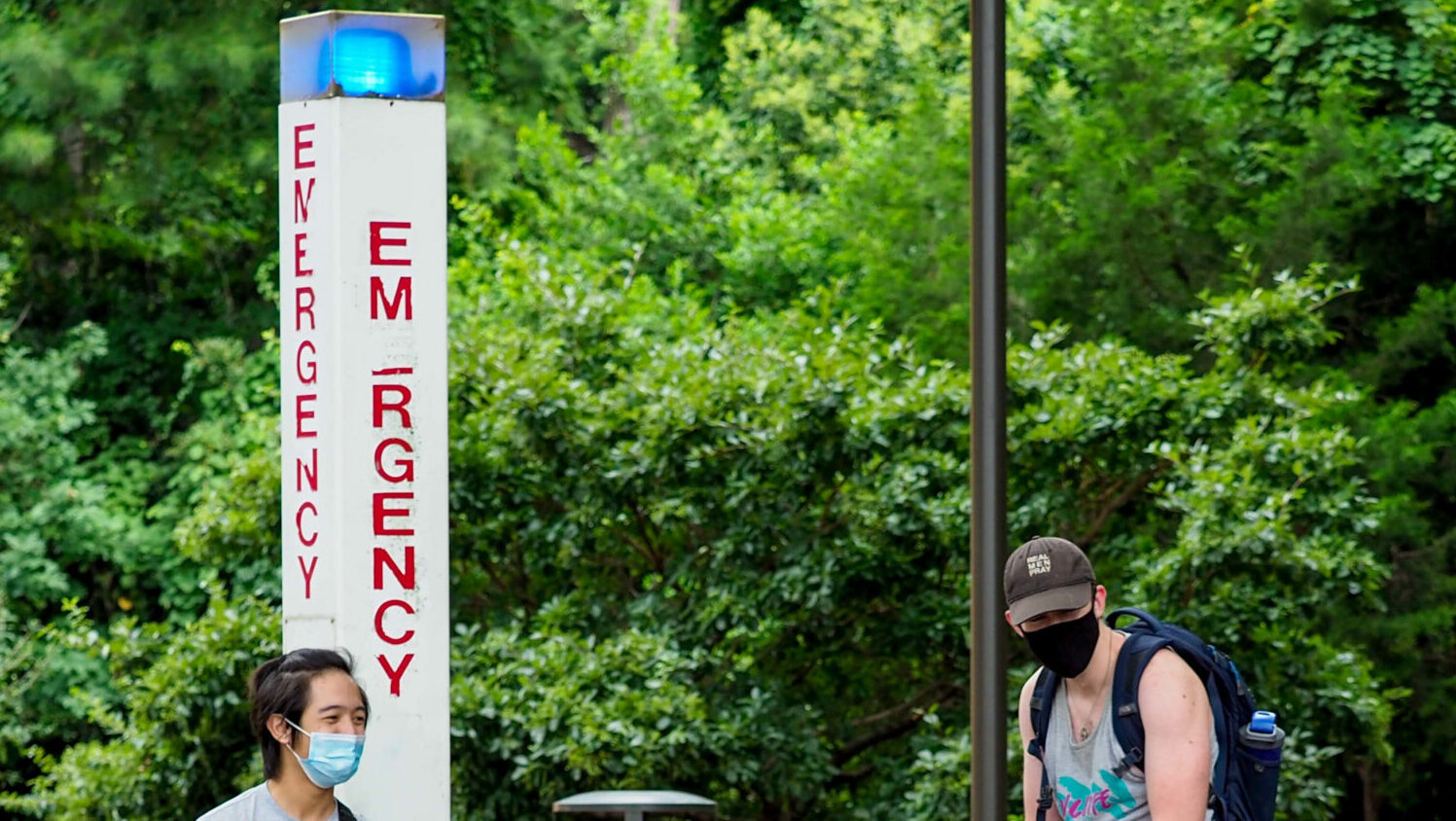
Building network connections
Once we build out all of the infrastructure, we can get outages down to hours, if not minutes.
Ed Rogers
ComTech’s director of Engineering and Construction
Within the past year, Communication Technologies (ComTech) has built and fortified various networks across campus to protect against cybersecurity threats and to provide emergency assistance when needed.
TUNAMELT
Ed Rogers, ComTech’s director of Engineering and Construction, said his team recently completed the Tactical Upgrade of Network Architecture Modifications to Existing Layer Two (TUNAMELT), a three-year initiative to replace older generation Cisco network switches that will no longer receive security updates.
This fiscal year, 105 Cisco 9300 series switches were installed in telecommunication rooms on campus. A total of 338 switches were installed during the project.
While the average campus network user won’t notice a change, Rogers said the project makes campus “more secure and less vulnerable to security threats against network switches.”
Wi-Fi 6
“Wi-Fi 6 is another big project,” says Rogers. ComTech is in its second year of a four-year effort to upgrade the wireless bandwidth in buildings across campus.
“Today’s technology requires higher density Wi-Fi than what we used to have,” says Rogers. The project will triple the density of access points and replace older models with newer ones that can handle more people and devices.
ComTech installed more than 1,400 access points in 18 buildings, upgrading from Wi-Fi 4 (802.11n) network to Wi-Fi 6 (802.11ax).
Life Safety Phone Lines
ComTech replaced AT&T’s 1,200 life safety phone lines on campus, completing a four-year initiative to ensure emergency assistance remains available on campus.
In 2017, ComTech began running its own copper cable and telecom equipment in every building on campus to replace AT&T’s life safety systems, which include fire alarms, elevators, blue lights and areas of rescue.
“It’s a legacy system that they don’t want to support anymore,” says Rogers. “All phone companies in America are getting out of the copper business. With Voice over IP, there’s no need to have copper phone lines anymore. It impacts everyone; all businesses will have to make this transition.”
The Engineering and Construction team ran copper cable to Centennial Campus and will complete West Campus within the next three months. North Campus and South Campus were completed last year.
“Our system is set up so that even if you have a fire in the building and the power goes out, these phone lines will still work,” Rogers said. “If you’re stuck in an elevator or if you’re in an area of rescue and the power goes out, the phone lines will still work.”
“It was a monster project. We had to run our own copper cable literally across campus to every building,” he said. “The cable lines go back to central locations or main distribution frames (MDFs) where we have equipment that provides dial tones. That is why the phone lines work when the power goes out; they are not dependent on a building’s power to operate.”
Rogers said the university now has a very resilient system for life safety phone lines when AT&T retires its service. “We’re really in great shape,” he said.
Rogers said his team worked on developing the life safety lines infrastructure while ComTech’s Systems and Development team worked on providing the backend equipment or voice gateways.
The new system is also cost-effective. “Instead of paying AT&T $15 per month per dial tone, it’s pennies per line for our system to run,” he said. “It’s a huge cost savings for us.”
South Mainframe Distribution Frame (SMDF) Zone Redundant Entrances
“Our biggest vulnerability in our network physical infrastructure is if we lose an MDF,” Rogers said. “An MDF serves as the primary hub of network communications infrastructure for a geographic region of campus.”
“In our current disaster recovery plans, we would be down for days, maybe weeks,” he said. “That’s a big impact to campus.”
“We have four MDFs, and we’re building a fifth one at Lake Wheeler,” Rogers added. The MDFs include South Campus (SMDF), North Campus (NMDF), Centennial Campus (CMDF) and West Campus (WMDF).
“We tried to figure out how to address that vulnerability,” Rogers said. “It’s not practical to have double MDFs so we developed the concept of redundant entrances cross-connect (REC) rooms.”
Rogers said this fiscal year, ComTech completed two REC rooms for the SMDF on Dan Allen Drive that will allow future fiber connections to the 95 buildings in that MDF’s zone. Currently, each campus building has one entrance point for fiber cable.
Wolf Village and Wood Hall serve as standby locations (REC rooms) with fiber cable that runs back to the CMDF. In the event of a disaster, he said, “We could use cables from these two REC rooms to provide network connectivity from the CMDF for the 95 buildings in the SMDF zone. They would also provide the life safety phone lines for that zone.”
ComTech’s long-term plan is to have a second entrance cable run from a REC room to the buildings they service. This would be done as future budgets permit.
“The ultimate goal is to reduce catastrophic outages that can last weeks down to days,” Rogers added. “Once we build out all of the infrastructure, we can get outages down to hours, if not minutes.”